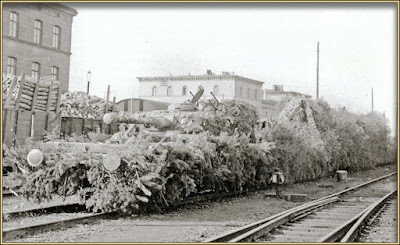I'm using this model, a 1:100 scale Artilleriewagen, to try to iron out some issues I've been getting with my resin prints.
You can see some diagonal lines running across the turret where something has shifted during printing — I don't know yet what caused that, and some research is in order.
It has happened at least twice, and as a result the profile of the turret has been distorted. Not enough to make it unusable; I've had worse misalignments in cast components from commercial manufacturers, but it's annoying.
It may just be that the various bolts and screws on the platen and rail need tightening, and that's always a good first step. Or it may be that the FEP is getting a bit flaccid.
More successful is the rigidifying of the box-like body of the model.
I like to hollow the models for printing, partly because it means they use up less resin, but mostly because having less contact area on the FEP at any given level makes a suction-created print failure less likely.
Having as much as possible of the non-visible bottom surface cut away gives me maximal access to the interior for washing away uncured resin, which means less chance of warping and cracking problems later. It also gives more access to the innards for the UV curing lights.
However, especially on a boxy model like this, thin walls means a less rigid and strong model. I could keep the walls thicker, but in this instance I've also added some internal bulkheads which provide a great deal of strength to the whole thing, as well as supporting the tabs on which the wheels are set. These bulkheads are 2mm thick, and I could probably halve that in safety.
Something that I find a bit annoying is that because 3d printing takes so long, every time I change a variable to test what's going wrong, it takes another few hours before I can see the results of my change. Hey-ho, I'll just have to learn to reign in my impatience.





